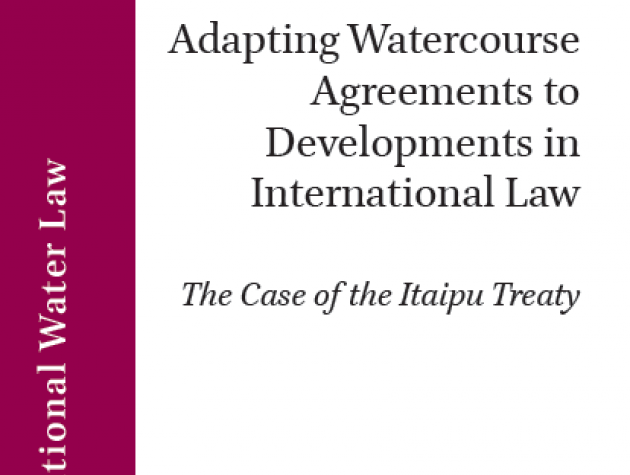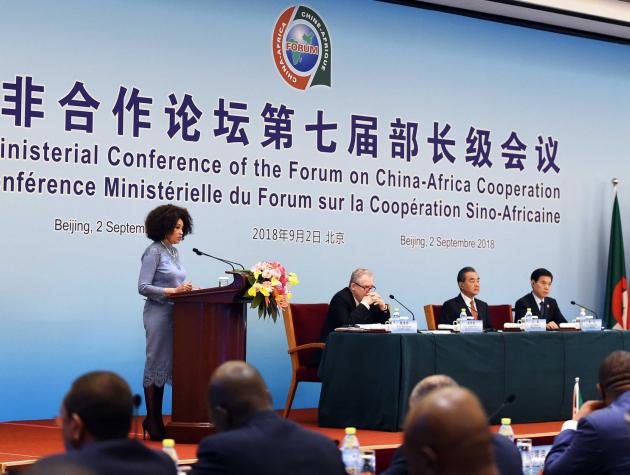The Geopolitics of Transboundary Water Governance
On 16 November, GEG held a fascinating seminar on the geopolitics of transboundary water governance. The discussion was global in scope, with a particular focus on the Mekong River. Three expert panelists compared different institutional frameworks and drew out lessons on governing shared commons. A summary is available below.
Event Summary
The panelists were:
Dustin Garrick, James Martin Fellow, Oxford Martin Programme on Resource Stewardship
David Grey, Visiting Professor of Water Policy, Oxford, formerly Senior Water Advisor, World Bank
Pichamon May Yeophantong, Oxford-Princeton Global Leaders Fellow, GEG
Professor David Grey highlighted the challenges – both political and hydrological – of managing international watercourses. Managing international watercourses always requires a mix of ‘institutions, information, infrastructure, and incentives’. He noted that 90% of the world’s countries share watercourses, and the mid-latitude regions of the world often have ‘complex hydrology’, characterised by high variability, unpredictability and extremes. There is a strong correlation between the occurrence of complex hydrology and the poorest and most vulnerable states, which have the least human and financial capacity to manage this complexity. Management deficits result in misperceptions and fears and can create or exacerbate political tensions. He defined water security as a tolerable level of water-related risk to society. He noted that what is “tolerable” depends very much on local context, including culture and values.
He noted that in recent years there has been an attempt to codify principles of customary international law in order to help manage transboundary water resources. Three core principles of customary international law relevant to international waterways are: equitable utilization, no harm, and prior notification, each applying reciprocally to all parties. However, codifying these principles has faced great difficulties, due in large part to the perceived challenge to sovereignty. When the 1997 UN Convention on the Law of the Non-Navigational Uses of International Watercourses came before the General Assembly for Adoption, after 26 years of drafting and discussion, 103 states voted in favour, 27 states abstained, and 3 states (Burundi, China and Turkey – each ‘upstream’) voted against. However, after 25 years, only 32 of the 35 countries needed for ‘entry into force’ have ratified the Convention.
Professor Grey discussed examples of international river basin organizations, which have had varying degrees of success, and probed the reasons for this. He highlighted the Senegal River as having a relatively successful management structure, with complex financial and institutional architecture binding the countries together. The cooperation we observe around the Senegal River is in part attributable to cultural convergence, as well as getting the incentive structure right. On the other hand, many of the rivers rising in the Greater Himalayas, shared by countries comprising half of the world’s populations, lack effective institutional frameworks, which may pose serious problems in the future.
With regard to the Mekong, he noted that some perceive the Mekong River Commission Secretariat’s staff and culture to be Western dominated. Such perceptions can undermine the effective management of water, since at its core managing water is all about values – and their valuation. It is important to ask – whose values are these – and is the voice of the poor is being heard? He noted that effective management of the Mekong will require greater stakeholder engagement, as well as more science to identify the potential impacts of actions or policies. While Chinese actions on the Mekong are often scrutinized, less attention is paid to important power asymmetries between the countries in the Lower Mekong. He also noted that while the US criticised China for its actions on the Upper Mekong, the US has not always been responsible with the water resources it shares, citing the Colorado River as an example.
Dr Dustin Garrick argued there is potential to scale up the lessons learned from managing small-scale water issues, and apply them to transboundary water management. These shared waterways can be geopolitical flashpoints, but water can also be a source for cooperation.
Successful water management is dependent on institutions. Difficult hydrology and intensifying climate risks mean water flows are becoming more variable and less predictable. This difficult hydrology requires high levels of institutional and infrastructure investment. There are many semi-arid rivers that are highly variable and managed in a federal system of government; these rivers have long been a source of tension for states and are a good place to look for lessons about managing water that crosses borders.
The Murray Darling River in Australia crosses different federal states, and has variable flows. The Mekong and the Murray Darling face many of the same challenges, there is even an agreement between the two river authorities to discuss managing floods and droughts, and to discuss awareness campaigning. He noted that asymmetries in use between opportunistic upstream and downstream states tend to be a main source of tension, and asked: how can these tensions best be managed?
Dr Garrick drew eight design principles for successful transboundary water management from Elinor Ostrom’s work on managing small scale commons. He emphasized these principles work best when they start at the local level, with citizens having the resources and opportunities to manage. The eight principles which together constitute ‘Institutional DNA’ are: clearly defined boundaries (specifying who has access to the water), shared information, leadership, clear rules, monitoring and enforcement, graduated sanctions, incentive-compatible agreements, and nested institutions in an enabling environment. Nested institutions need to reinforce local decision-making with compatible and complimentary institutions at higher levels.
There is often a misalignment between the hydrology and politics. Water crosses political boundaries and creates tensions everywhere, including at the subnational level. Proportional allocation rules and agreements that include drought provisions can ease these tensions. The shift from hard solutions (court settlements) to soft solutions (local dialogue) is encouraging. Underlining the point made by Professor Gray, Dr Garrick argued that river basin organizations can meet the eight principles of successful commons management. They can facilitate good management by providing a shared legal framework, information-sharing mechanisms, dispute resolution mechanisms, coordination mechanisms, and shared financing.
Dr. Pichamon Yeophantong focused her remarks on China and the geopolitics of regional water governance in the Mekong. Water is a finite resource, and illuminates a link between regional security and human security. Echoing Dr Garrick, she noted that the particular challenge of transboundary river governance is the weakness of the relevant institutions. Basins are sites of contention. With weak institutional mechanisms, asymmetrical power relations, and contending interests, these transboundary basins often illustrate the tragedy of the commons.
Dr Yeophantong argued, however, that ‘water wars’ are not inevitable, and it is important to view disputes over international rivers as politicized conflicts of interests. Water is both a potential flashpoint and a space for cooperation in the Mekong region. It is important that we do not only focus on conflict, but also consider the underlying interests of states and where they may be shared. In the Mekong, China is the “upstream superpower.” Despite China’s overwhelming position of strength, cooperation and institutional dialogue is emerging in the region, contrary to what we would expect.
China itself has water shortages, and China’s economic growth has led to environmental degradation and rising energy demands. To meet this rising energy demand, Chinese state-owned hydropower enterprises have gone global. Yet China combines its global strategy of extracting resources overseas with a regional soft power strategy, aimed at making ‘friends with benefits’ in its home region. States in the Mekong delta welcome Chinese investment, but local communities often have mixed feelings about the implications of this investment.
There are 8 operational dams on the Lacang-Mekong, but there are plans for 18 eventually. She noted there is strong local pressure emerging to contest some of these dams, particularly in Thailand. This nascent civil society movement is contesting state legitimacy, water rights, and the overall development paradigm. Dr Yeophantong highlighted Professor Gray’s point that debates over water management reflect underlying values with an example. She noted that the development paradigm is entrenched in the region, and tends to be associated with a “pollute first, clean up second” mentality. She noted that while there is evidence of China cooperating with other states, we should remain realistic and aware that most inter-state cooperation is based on strategic priorities.






